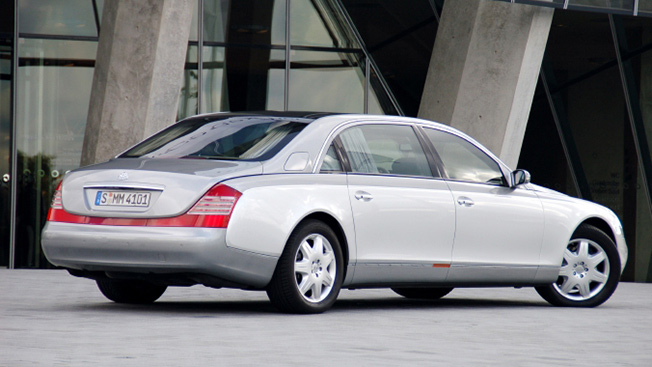The latest performance feat from Mercedes-Benz is impressive indeed—a giant U-turn. After announcing in August of 2012 that it would discontinue the ultra-premium Maybach brand, Mercedes has reportedly decided to bring the car back. For the sort of consumers who can drop six figures on a set of wheels, the next question might be: How late’s the showroom open? But for those of us content to watch, another thought looms: How is Mercedes going to pull it off?
“I can’t really figure this out,” said veteran auto correspondent Paul Eisenstein, who runs The Detroit Bureau. Maybach’s original market strategy, Eisenstein says, “was a disaster, so this [rollout] is all the more fascinating. There is an opportunity, but it’s challenging.”
That disaster bit? Eisenstein’s not exaggerating. When Maybach hit the market in 2002, Mercedes salivated over the idea of grabbing market share from the likes of Rolls Royce and Aston Martin. And given the Maybach’s asking price ($379,000 – $470,000 in its last production year) executives in Stuttgart figured a modest 2,000 units per year would put them in the purple. Instead, Maybach drove them straight into the red. Sure, A-listers like Jay-Z, Russell Simmons, Diddy and Madonna each bought one of the 20 foot-long, three-ton sedans—but Maybach sold only 200 cars in 2011. Reportedly, the brand never made a cent.
If Mercedes (which did not respond to Adweek’s request for a comment) is to succeed this time around, it will have to overcome the same formidable challenges that sunk Maybach just two years ago.
The big one is design. Maybachs were renowned for their James Bond-like options—back-seat champagne chiller, electronic perfume atomizer, “Parktronic” ultrasonic obstacle detector, and other cool stuff like that. But outside, except for the two-tone retro paint scheme, the car pretty much looked like an extra-long Mercedes. “Maybach was the ultimate stretch, but they didn’t differentiate it enough,” Eisenstein said. “The car didn’t have enough of a distinct personality.”
Another thing Maybach didn’t have—and still needs—is name recognition. While historians will point out that Maybach manufactured the powerful engines that propelled the dirigible Graf Zeppelin around the world in 1929, the name disappeared during the Second World War. In the decades since, the likes of Bentley, Rolls and Maserati have become the driveway toys of choice for the world’s moguls.
Finally, Eisenstein points out that Mercedes is going to have overcome a perceived confidence problem in the brand. Maybach was supposed to be Mercedes’ contribution to the super-premium segment, a strategy it shelved in favor of trying to push the S-Class up to that level, which didn’t work. Now, Eisenstein said, “I question whether by the act of saying they’ve eliminated Maybach that [Mercedes] hasn't already damaged it. Are they trying to have a reverse fire sale?”
We’ll find out in November, when Mercedes will unveil the new Maybach at the Los Angeles Auto Show. (Tellingly, the wraps will also come off in Guangzhou, one of China’s wealthiest cities.)
If Maybach stays on the road this time, it’s probably bad news for hip-hop heavy Rick Ross, who told MTV in 2012 that Maybach’s demise would increase the cars’ value. “It makes the brand even more exclusive now,” Ross said. “So everybody who has one, hold onto it for a little while.”
At press time, a used Maybach 57 was for sale on eBay, starting price of $69,900. It had no bidders.








